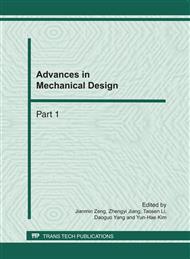p.1501
p.1505
p.1509
p.1513
p.1518
p.1523
p.1528
p.1532
p.1537
Numerical Investigation into Thermal Behavior of Brushless Permanent Magnet Motors
Abstract:
The performance of brushless permanent magnet motor for electric vehicle applications is simulated by commercial CFD codes Fluent 6.3. It is difficult to model motor winding area and to well pose the motor external boundary conditions for using CFD method. A possible approach to simplify the thermal resistance computation is to use an empirical equivalent thermal conductivity of the system winding impregnation and insulation. The empirical equivalent thermal conductivity is case sensitive and regressed in the experiment. The same is true for the boundary condition of motor. In this paper, we proposed a new model to compute equivalent thermal conductivity and overcome the above problem. This model takes advantage of the packing bed heat transfer model proposed by Zehner and Schlünder. Besides, the boundary conditions are also obtained by the numerical experiments. The validity of CFD method using in the present paper is validated utilizing the experimental data. The numerical data are concurred with the experimental data. As a result, the CFD method is shown to be a feasible method for modern thermal design for brushless permanent magnet motor.
Info:
Periodical:
Pages:
1518-1522
Citation:
Online since:
February 2011
Authors:
Price:
Сopyright:
© 2011 Trans Tech Publications Ltd. All Rights Reserved
Share:
Citation:


